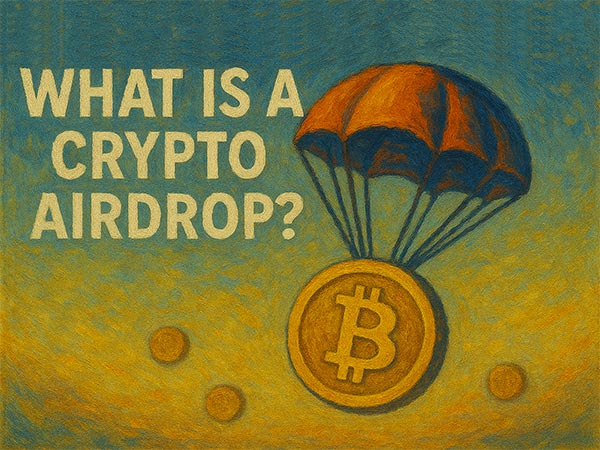What Is a Crypto Airdrop? How to Get Cryptocurrency Airdrops

In the cryptocurrency ecosystem, airdrops have become a key marketing strategy for projects to attract user attention. According to the latest data from Dune Analytics, the total value of tokens distributed via airdrops by blockchain projects in 2025 is projected to exceed $18 billion, representing a growth of approximately 150% compared to 2024. Behind this astonishing growth lies an increasingly sophisticated value distribution mechanism between projects and early users, and the evolution of airdrops from a simple marketing tool into a core method of ecosystem development.
The Nature and Logic of Airdrops
An airdrop is essentially the free distribution of tokens by a project to specific wallet addresses. This model originates from traditional finance, akin to stock dividends, but in the crypto space, it has evolved into a more mature mechanism. In 2025, high-quality projects such as Movement and Hyperliquid rewarded early ecosystem participants through airdrops — Movement's July 2025 airdrop alone reached a record-breaking $1.45 billion.
From the project’s perspective, modern airdrops serve four core purposes:
-
Precise user acquisition
-
Token liquidity optimization
-
Governance decentralization
-
Ecosystem bootstrap initiation
It’s worth noting that airdrops in 2025 are no longer mere "token giveaways." Instead, they have become complex systems involving:
-
Sybil resistance mechanisms
-
Proof of contribution models
-
Loyalty-based reward programs
For example, WonderChain’s "User-Designed Airdrop" exemplifies the latest evolution of airdrop strategy.
Systematic Methods to Receive Airdrops
To receive valuable airdrops, you need to implement a systematic participation strategy.
1. Deep Involvement in Major Blockchain Ecosystems
-
Focus on high-activity chains like Ethereum Layer 2s (Arbitrum, Optimism, Base), Solana, Cosmos, etc.
-
Regularly check the "Upcoming Airdrops" section on platforms like CoinList and CoinMarketCap
-
Participate in testnet campaigns and complete specific tasks to obtain eligibility
2. Optimize On-Chain Behavior
-
Perform meaningful actions: cross-chain transfers, micro transactions, contract interactions
-
Maintain activity frequency: interact with target protocols 2–3 times per week
-
Increase interaction value: provide liquidity (LP) or stake in DeFi protocols
3. Diversify Participation Channels
-
Join project Discord servers and complete identity verification
-
Engage in loyalty programs on platforms like Galxe and Layer3
-
Contribute to open-source projects (e.g., merging PRs on GitHub can increase airdrop weight)
4. Wallet Strategy Management
-
Use separate wallets (e.g., MetaMask or Rabby) for airdrop participation
-
Create sub-accounts for each project (via Rabby’s wallet segmentation feature)
-
Maintain consistent interaction history for at least 3 months
Essential Tools and Data Platforms
Professional tools can significantly improve your airdrop hunting efficiency.
1. Airdrop Tracking Tools
-
Airdrops.io: Aggregates upcoming and potential airdrops
-
Earnifi: Scans wallet addresses for airdrop eligibility
-
AirdropAlert: Offers verification and participation tutorials
2. On-Chain Analytics Platforms
-
Nansen: Identifies smart money wallet behaviors
-
Arkham: Visualizes whale wallet transactions
-
Dune Analytics: Provides airdrop distribution statistics
3. Security Tools
-
DeBank: Checks wallet authorization status
-
Revoke.cash: Revokes malicious smart contract access
-
Hopae: Detects wallets flagged as Sybil risks
4. Productivity Enhancers
-
Rotki: Calculates tax implications of airdrop income
-
Portals: Manages cross-chain interaction logs
-
Chainlist: Quickly adds RPC networks to wallets
5. Community Intelligence Sources
-
Airdrop Hunter (Telegram group)
-
r/CryptoAirdrops (Reddit community)
-
Official project Discord announcement channels
Note: Some projects explicitly disqualify addresses that have interacted with mixers like Tornado Cash. Hence, maintaining wallet compliance is essential. For managing multiple accounts, Rabby’s wallet aliasing feature allows you to isolate risk without compromising main account security.
Risk Identification and Security Protection
Participating in airdrops carries multiple risks. The most common threat is phishing airdrops, where attackers impersonate well-known projects to trick users into authorizing malicious contracts. For instance, in June 2025, the Cointelegraph website was hacked, and its front-end was exploited to promote a fake "CTG Token Airdrop," stealing funds from users who connected their wallets. A similar incident occurred on CoinMarketCap, highlighting how crypto news platforms have become prime phishing targets.
Another significant risk involves tax compliance. In jurisdictions like the U.S. (IRS) and the U.K. (HMRC), airdrop income is taxable and must be reported based on market value at the time of receipt.
Recommendations:
-
Use dedicated wallets for airdrops (separate from your main holdings)
-
Regularly audit smart contract authorizations
-
Install browser extensions to detect phishing domains
Value Assessment and Decision-Making Framework
Not every airdrop is worth your time. A solid evaluation framework should consider four dimensions:
-
Project fundamentals
-
Tokenomics
-
Clarity of airdrop rules
-
Team credibility
Take the Celestia (TIA) airdrop as an example. It explicitly rewarded modular blockchain developers, Ethereum Rollup users, and Cosmos stakers. This level of transparency significantly reduced trial-and-error costs for users.
Data from Token Terminal shows that projects with clear airdrop criteria yield an average 3.2x higher ROI than those with vague rules.
Industry Evolution and Future Trends
Airdrops are undergoing professional transformation. Since 2024, projects have increasingly adopted Proof-of-Contribution models rather than relying on basic interaction counts. This includes analyzing historical wallet activity and using AI-based participation metrics.
Platforms like Galxe and Layer3 are making on-chain behavior more verifiable and standardized. Airdrops and loyalty programs are also merging — Blur’s Season 2 airdrop with progressive rewards may set a new industry standard.
2024 data shows that projects allocating over 10% of total token supply via airdrops have significantly higher user retention and price stability compared to those with small-scale airdrops.
For long-term participants, building a sustainable airdrop strategy is far more important than chasing quick profits. Analysis from 2024 revealed that 88% of airdropped tokens crashed in price within 15 days, and only a few on Solana and Ethereum maintained positive returns after 90 days.
This requires investors to track project development, adjust focus accordingly, and prioritize projects with:
-
Reasonable FDV (Fully Diluted Valuation)
-
Sufficient liquidity
In practice, treat airdrop participation as a byproduct of crypto learning, not a primary source of income. Maintaining rational expectations and focusing on understanding blockchain fundamentals and project value often yields greater long-term rewards.
As noted in a report by Keyrock:
“The true beneficiaries of airdrops are not short-term arbitrage hunters, but long-term value investors who are naturally committed to ecosystem building.”
-
Sign Up

OKX
OKX is a leading global digital asset trading platform offering spot and derivatives services for cryptocurrencies.
-
Sign Up

Binance
Binance is one of the world's largest cryptocurrency exchanges, offering spot, futures, staking, and a wide range of digital asset services.
-
Sign Up

Bybit
Bybit is a global cryptocurrency exchange specializing in derivatives, spot trading, and crypto-financial products.
-
Sign Up

Gate.io
Gate.io is a leading crypto exchange offering diverse trading options, low fees, and strong security since 2013.
